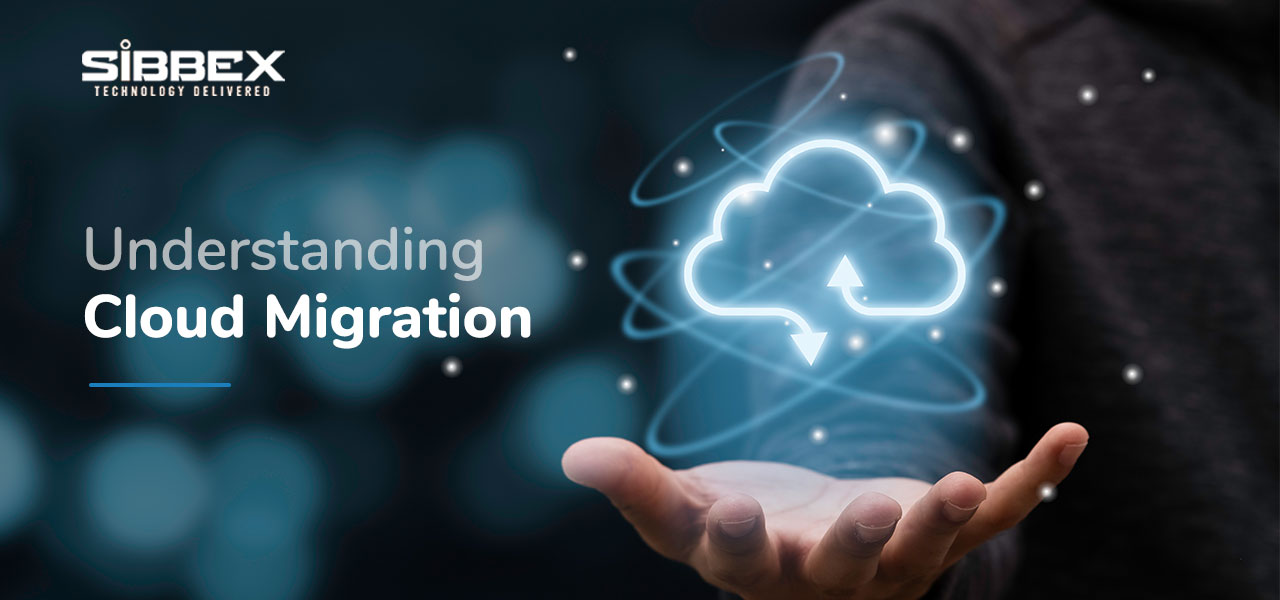Understanding Cloud Migration
In the world of today, technology has progressed to a stage where understanding small business cloud migration has become crucial. Small businesses operate at a limited budget and need security from the get-go. This is where cloud migration steps in, as a cost-effective way of securing your data. Cloud migration is all about moving all your valuable data and programs from on-premises to the cloud.
Cloud migration is no longer just a technological upgrade but is much more. Migration has become a necessity for all small businesses. It is a way of easily accessing your data, improving teamwork, and securing your valuable information. In this article, we will list everything there is to know about cloud migration. There is a lot to discuss in the technical terminologies. it would be best to understand the basics first.
What is Cloud Migration?
Cloud migration is the process of transferring the IT resources of any business from a private on-premises server to a cloud architecture. The cloud migration process can become complex depending upon the number of resources supported in each project. Cloud migration services include business services platforms, productivity software remote desktops, Internet of Things (IoT), CRM support systems, and more.
For running smooth business operations, you need to maintain and upgrade cloud migration should be centralized. It is based on a legacy enterprise data center architecture. Migrating data to the cloud is undoubtedly a way of saving money for small businesses. According to the statistics, large organizations save about 40% to 50% on their traditional IT operating costs.
There are a variety of cloud hosts available and some even provide you with a “pay as you go” service. You can expand your IT resources according to your business requirements. Cloud migration is a great way to save extra operational costs. You only pay for what you use and nothing extra.


Why Cloud Migration Should be Your Top Priority for 2022?
Cloud migration is a great technology and an excellent way of providing your data with the best security possible. Cloud services were progressing at a constant pace for the past few years, but the pandemic of Covid-19 taught us an important lesson. Covid-19 showed us that IT infrastructure needs to be globally accessible. The pandemic introduced remote work as a necessity. At this time cloud services also enabled employees to use IT resources in a shared and secure space.
Benefits of Cloud Migration:
Small business cloud migration offers a wide range of benefits that ensure your business success.
- Cost-Effective: Cloud servers allow you to save a lot of operating costs on running your physical servers. The cloud migration services that are included in third-party services do not include hardware and IT resources. You save a lot on capital expenditures with the help of cloud services.
- Agile and Scalable: Cloud services rank on top of agility and scalability, as they automatically sake capacity for fluctuating demand. Cloud services are highly adaptable and agile. Application updates provide faster and more efficient working.
- Decreasing Footprint: You can expand or contract your cloud IT resources according to your precise business requirements. This results in creating much less of an impact on the environment.
- Better Security: Sharing valuable data on the cloud, is more secure than physical servers. You can restrict unwanted access to your data with the help of security updates. This way you can focus on other business operations without worrying about security.
- Backup and Recovery: Cloud services offer backup and recovery solutions to protect your data from any disaster.
- Global Workforce: Cloud migration allows your employees to work as a cohesive unit, as it improves the global workforce. All your employees can get access to the required files. This way you won’t have to waste time and effort on individually providing them access to needed documents and programs.


What are the types of cloud migration strategies?
There are a variety of ways for cloud migration. Six cloud migration strategies that you should know before utilizing cloud migration services are crucial to understanding. These six methods are also termed the six “Rs” of cloud migration.
-
Reposting:
Reposting is the approach in which all your data and IT resources are lifted from an on-premises hosting and shifted to the cloud. The reposting strategy is also known as the lift and shift method. This process involves making an entire replica of the current environment. All is done without making any major changes to get a faster ROI. Businesses that do not want to change their culture in any way. This method will prove to be the best for small businesses.
-
Reforming:
Reforming is a variation of the reposting strategy. The reforming approach also makes a copy of the entire data and transfers it to the cloud but along with some adjustments. It allows you to optimize your cloud landscape. Reforming allows businesses to get cloud migration services for their conservative culture along with improved system performance.
-
Repurchasing:
This is a great strategy that includes moving your applications and IT resources to a new cloud-native product. Most SaaS companies use this approach. Most businesses prefer transferring their CRM to Salesforce. It can be challenging for companies to get familiar with the new codes and train employees according to them.
-
Refactoring:
Refactoring or architecting is a cloud migration strategy that involves rebuilding your application from scratch on the cloud. If you are a business that wants to leverage cloud services to use them at their full potential. This strategy will be highly beneficial for businesses of all statures.
-
Retiring:
Retiring involves turning off applications that aren’t useful for your business. The retiring approach helps you in boosting your performance by eliminating useless applications to free up space.
-
Retaining:
Retaining is the final strategy in cloud migration. This approach means prolonging or postponing the process of cloud migration. Most organizations might not be ready to adapt to cloud migration just yet. In this case, such organizations can visit cloud migration at a better time. This involves only migrating to cloud computing only IT resources that make sense to your business.
What is included in Cloud Migration for a Small Business?
Cloud migration services attract small businesses in a variety of ways including scalability, flexibility, lower costs, and much more. Small businesses can face a tough challenge in deciding where to begin. You need to decide on security concerns and choose the right cloud migration service providers.
Cloud migration for small-sized businesses includes many features. However, the real challenge is to understand which ones are the best for you. The first and main thing included in it is updating back-office processes, which involves updating all your system information entirely. Managing communication systems is what comes next to ensure that your data is nicely aligned.
The final step is providing access to the public cloud for the test and getting development control. The main feature included in cloud migration that small businesses highly prefer is the option of scalability. This way small businesses don’t have to spend hefty money on upgrading hardware. All this comes with added security that safeguards your valuable information and protects your business integrity.


Risks & Challenges of Cloud Migration:
Everything has its fair share of pros and cons. Although many businesses are embarking upon cloud migration, they would encounter some challenges. These challenges and risks depend upon business resources. A company’s IT capabilities and business requirements are two of the major aspects that impact the process of cloud migration.
We have managed to list down some of the common risks and challenges of cloud migration services.
-
Incompatible Infrastructure:
Directly migrating your IT resources with the lift and shift process to an an entirely different environment, there can be the risk of incompatibility. Moving all your IT resources to a public cloud is not an easy task. Many complications can arise. Therefore, you need the help of professionals to carry out this task.
-
Security:
Security is the most lethal risk for any business. Conpabies try their best to avoid such challenges when using cloud migration services. Cloud migration can lead to several security risks that include everything from compliance violations to contract breaches. Most companies also face security risks in the form of insecure APIs, malware attacks, and much more. It is essential to be aware of such threats and make sure that you do everything to avoid them.
-
Lack of Control and Visibility:
Reduced visibility on the public cloud is a common challenge that organizations face. Most companies look to avoid this issue as it hinders performance significantly. An on-premises system offers complete control over all your IT resources, but cloud migration isn’t the same. Cloud migration can end up reducing your visibility.
-
Risk of Data Loss:
For any organization, the most valuable and essential prospect is the data. Such risks can cause heavy damage to your credibility along with disrupting your reputation. These threats also compromise your data.
Whether it be an incomplete moving process to the cloud or files being corrupt, your data will be lost. Losing data is lethal for your company, as all your files must be securely backed up and moved to the cloud.
Why are more companies migrating to the cloud?
Cloud migration is the new and secure way of scaling all your IT resources and improving the productivity of your business. The majority of the organization have already transitioned from an on-premises system to a cloud. Cloud migration provides small businesses with a cost-effective, and flexible way of handling all business respires.
Cloud migration services provide businesses with added security and you can scale your IT resources according to your business requirements. Migrating all your company resources to the cloud is an effective way of running business operations smoothly.

Parting Thoughts:
With the world going digital, the need for cloud migration has become essential. On-premises systems and data centers are getting obsolete. Cloud services are the new and improved way of boosting business performance. Cloud migration services providers can be difficult to find, Sibbex is your one-stop shop for all managed IT services. We have skilled and experienced professionals to ensure the quality of our services.





